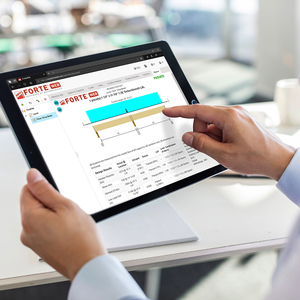I bill my projects on a cost-plus basis, which generally works well both for me and my customers.
One of the items in the cost column for me is an administration charge for all but the simplest projects. It covers office expenses, faxing plans and stuff around, scheduling subs, time spent on walk-throughs with subs or inspectors and so on.
New customers object to it, although no one has ever refused to pay it. Once it’s explained to them they tend to be fine with it.
It would be easier for me to take that item out of the ‘cost’ column and increase my ‘plus’ column by a percent or two. It would also perpetuate the myth that subcontractors appear by magic out of the clear sky, bills are produced accurately and in a timely fashion when I wave my magic wand, and I’m available to answer questions since I’m sitting in my La-Z-Boy with nothing else to do, and so on.
In other contractors’ opinions, is that a myth worth keeping up in favor of easier negotiations or is the myth-busting worth it in the long run?
In customers’ opinions, do you ever get a case of Too Much Information when you look over your cost-plus paperwork from your contractor or do you wish for more detailed breakouts?
just wondering
j


















Replies
It sounds like you are missing something in your sales process.
During the sales process, you obviously are selling your services on a cost plus basis or T & M, or whatever. During that presentation you probably should be including a sample bill which shows how you are going to bill. This question/objection would be raised/explained at that time.
If you are attempting to be transparent, it seems to me that this continuing issue would be better dealt with before the first bill is presented. I suspect many people are "okay" with paying it after you explain it but it still leaves a bad taste in their mouth. Your goal should be to be leaving a good taste in their mouth.
I hadn't been thinking of it from the sales perspective, and that's likely the problem. Thanks for the 2nd set of eyes. j
Jeff,
I believe it is best to build all overhead items into your hourly billing rate and not present a seperate line for admininstrative. Dealing with subs and material purchases is covered my markup on those items.
Jerrald Hayes has discussed this in great depth and has developed a spreadsheet-PILAO to help folks develop the labor rate.
Bruce
<not present a seperate line for admininstrative>I already do that on smaller contracts - lets say < $7K total. I should probably stop processing my contracts differently depending on how big they are. That's maybe the closer to the root of my problem than whether to break out administrative costs as a line item. j
On projects that are cost-plus, there is the "plus" and in my opinion that should include time doing the admin/PM stuff you are describing. On my projects, the "plus" is a set amount and includes all of the admin, PM, overhead, profit, etc., that I provide. Part of the pre-contract discussion is the "plus" and what it covers. No one has objected to this, after all the reason they hire a contractor is to handle all of that stuff. It is usually very early in the job when they see how much work I do to keep everything rolling, and then they realize they're getting a bargain. It's all in the upfront discussion. I would not use a percentage as your "plus", that tends to leave a bad taste.
<On my projects, the "plus" is a set amount and includes all of the admin, PM, overhead, profit, etc.>OK, that's exactly what I'm interested in. I also have been doing my cost+ as the cost of production plus a fixed fee rather than plus a percentage. I really like it and it works well from the customers' point of view as well, although I think certain personalities gravitate that way more than others. However, for me, the plus is margin and an estimated amount for service charges, interest on LOC, etc. Administrative expenses related fairly directly to the project all get lumped up and appear in the cost column. I think I either need to bump up my plus and hide the admin or, as Jim suggested, give the customer a heads' up about admin as a line item at the start of the project. "What is this for?" is not the best question to deal with during closing week. j
I would really watch it with charging for interest on a line of credit or any other service-charge type of fee. If your business requires borrowed money to operate you need to look at front-loading the billing a little more so that job cost are not requiring you to borrow money. As a customer I would get unhappy if a contractor were billing me for interest he was paying on borrowed money, as a line item. You are far better off either eliminating that expense or at least not showing it to me. I'm guessing that your billings have one or two items that look like junk fees to customers, and I would get rid of them. I'm in favor of one fee that covers all admin, PM, overhead, and profit (and FWIW I do a fair amount of work on a cost plus fixed fee basis also).
<charging for interest on a line of credit or any other service-charge type of fee>maybe I wasn't very clear. All the stuff I need to do to finance myself is part of the lump sum contractor's fee. When I decide I don't need financing more of that fee stays in my account and less goes to the bank's pocket, but that's neither here nor there as far as the customer is concerned. There aren't several line items on my bill that appear to be junk charges - just one, the project admin fee. My original question had more to do with project-specific administrative expenses - how much time/resources my office spends on project #123. The sense I'm getting from all here is to roll that into the plus and have only jobsite-related costs appear as costs. Whether to front-load or back-load the billing is another question that I need to spend some time with. Front loading lessens my risk but makes for an apprehensive customer. Apprehensive customers worry. Worry-ers second guess and micromanage. Change orders go up, schedules go out the window, nobody happy. Back loading means the customer is paying for something that has already happened, as they would with most other products and services, but means the contractor bankrolls the project during the turnover time and absorbs the risk of the customer bailing out or stalling.
Balance. Ah. Balance. j
>>The sense I'm getting from all here is to roll that into the plus and have only jobsite-related costs appear as costs.
That's my approach. I did a large job a couple of years ago where I charged a fixed fee of X dollars AND a monthly management fee for each month the project was under construction. I was agreeing to take very minimal plans and run with them, and I could tell the whole thing was going to drag on. It did and I was glad to be collecting the monthly amount to compensate for that. On a project where I set a fixed fee I want to know from the outset what the scope is and that the big decisions will be made early so I can run the job as quickly and smoothly as possible.
David, Is your fee deferred until job completion or do you collect portions as the job progresses? If it's ok to ask.Thanks, John
Fee collected as the job progresses. I determine approxiamtely how many times a job will be billed, and divide the fee by that number. Current job is expected to be 4 months, billed twice per month, so there should be 8 billings. The last 5% of the fee is not billed until the final invoice... retainage of sorts for the owner's benefit.
You said earlier that you don't think the "plus" should be % based. How do you determine it?
I put together a quick 'n dirty spreadsheet that crunches a few scenarios... one is a simple percentage-based selling price, another is a time-based selling price. The time-based price takes into account annual overhead and profit goals, etc. Inputs are things like total job cost, annual overhead, annual income to me needed, my expected field hours, my expected admin/PM hours, insurance cost for the job, etc. etc.
If a job has a lot of expensive materials (kitchen with astronomical granite and Wolf/Subzero appliances) and is fairly quick, a percentage based price may be higher and a time based price may be lower. If a job is long but has more labor and less materials/subs, a percentage based price will be lower and a time based price will be higher. If a job has a lot of subs and minimal design provided to me, my expected admin/PM hours are a lot higher. Lots of variables can be taken into account. I know that my annual overhead does not vary that much with the dollar amount we gross--the overall time factor on a job is much more important.
<On a project where I set a fixed fee I want to know from the outset what the scope is and that the big decisions will be made early>Exactly. Not every customer knows, or wants to know, at the outset what the final project will be like and those people need a contract that allows for and pays for developments along the way. Those who can and want to know everything in advance work really well with a cost+fee structure. thanks for you thoughtsj